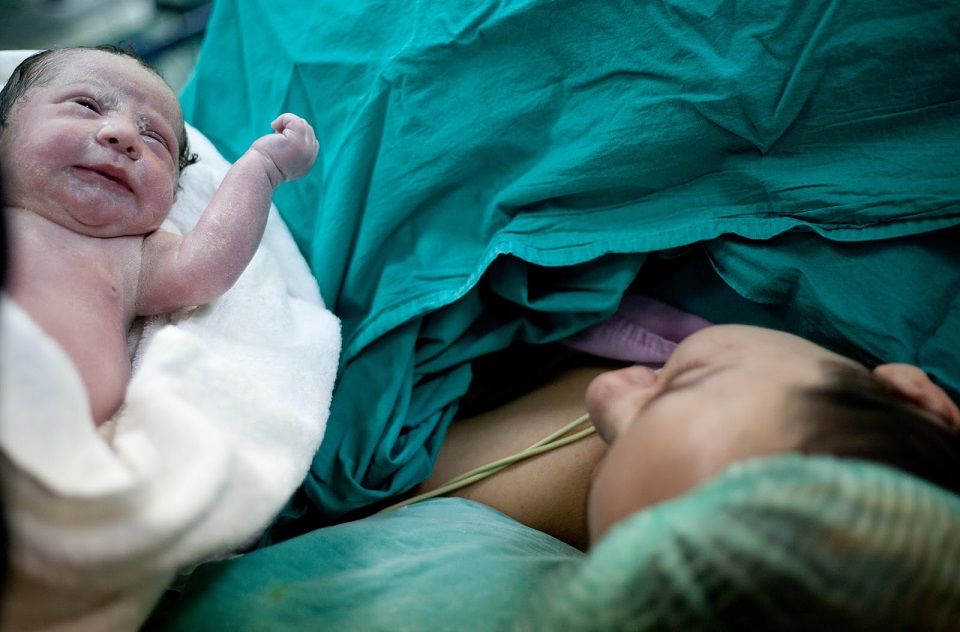Maternal-Assisted Caesarean Section
Like most things to do with pregnancy (and life in general for that matter!), there is often no single “right” way of doing things. Equally, there is usually no single way that all women feel about issues related to their pregnancy. Attitudes towards caesarean sections are a classic example of this. For some women, having a caesarean section is their preferred method of childbirth. Others don’t have strong feelings one way or the other. However, many women see a caesarean section as a necessary evil, while others are profoundly disappointed that they ended up needing something that they were hoping to avoid.
Similarly, the reasons for negative feelings about caesareans are often complex, and vary from person to person. Some are frightened of the surgery itself, or of the anaesthetic that goes along with it. Some don’t like the fact that the natural process of childbirth becomes a medical procedure. Others are disappointed that they didn’t get the opportunity to experience vaginal birth, while some feel that they are distanced or removed from their birth experience by the processes and procedures associated with caesarean births. I’m sure that there are other feelings also that I haven’t captured in this list.
As a caring and compassionate obstetrician, I strive to be aware of, and supportive of women’s choices and feelings related to childbirth. This includes respecting different attitudes to vaginal birth, as well as different approaches to caesarean birth. In this context, I am mindful of the small but growing trend for women to be more engaged in their birth experience, even when that involves caesarean section.
What is a Maternal-Assisted Caesarean Section?
The phrase “maternal-assisted caesarean section”, along with similar other labels, has been around for a few years now. In different places in can mean different things, but in essence it is about facilitating women to be more actively involved in the caesarean birth of their baby if they are keen to do so, and if it is safe to do so. It allows women to help lift their baby out of their own womb, and up onto their chest, welcoming them into the world, and having their first cuddle.
A maternal-assisted caesarean section is not for everyone. Participating means becoming involved in the medical procedure. This includes being instructed in and performing a surgical scrub hand wash, and donning sterile gloves and a gown. It also means that the surgical drape that usually shields you from having to watch your operation is lowered, so that both you and your partner will see what is happening during the operation. This of course means that you will see the incision in your tummy, your blood around the operation site, and the procedures used to deliver the baby, which may be more forceful than you were imagining. Many people are not prepared for these scenes, and may find them confronting or distressing. Remember also that even if you feel OK with it, your partner may not be comfortable seeing you in this way.
Preparing for a Maternal-Assisted Caesarean Section
It is also important to remember that caesarean section is still a major operation, with potential for difficulty and complications, just like any other surgery. There may be some circumstances where a maternal-assisted caesarean is not possible, or where it is inappropriate. Given the extra time involved in preparing a woman for participation in the operation, maternal participation is not possible / available for emergency (unplanned) caesareans. There may be other factors which make the procedure more complicated, including having a low-lying placenta, having twins, having a baby in the breech presentation, having a preterm baby, etc. This is not an exhaustive list, and any woman interested in a maternal-assisted caesarean will need to be assessed on an individual basis to determine if it is appropriate. It may also be the case that something occurs during the course of the operation that means that the plans are changed at the last minute.
Interested in a Maternal-Assisted Caesarean? Get in Touch With my Practice Today
If you are interested in the option of maternally-assisted caesarean, you will need to discuss this with me during the course of your pregnancy to consider whether this is something you are prepared to do, and whether it would be an appropriate choice in your circumstances. You will also need to participate in a counselling / education process to ensure that both you and your partner are fully prepared for the experience.
Please feel free to discuss this with me if you would like further information.

Maternal-Assisted Caesarean Section FAQs
Why do mothers have C-sections?

For some women, a C-section is a safer option than a vaginal birth, especially if you have medical complications or conditions that may affect your delivery, such as a large baby, non-progessive labour, or if your baby is in distress. C-sections may be planned or an emergency depending on the situation.
Which week is best for C-section delivery?
If you are carrying a healthy pregnancy, it’s best to wait until 39 weeks before giving birth. When scheduling a C-section delivery, we typically recommend waiting until your baby is fully-developed and ready to cope outside the womb to avoid any potential health problems later in life.
Can I hold my baby immediately after the C-section?
Because a maternal-assisted C-section is more hands on from the mother, you can typically hold your baby right after it is delivered. Even in non-maternally assisted caesareans it is often possible to hold your baby almost immediately. However, sometimes babies born by C-section have trouble breathing and require immediate assistance from your obstetrician. We will work swiftly to make sure your baby is stable and healthy, then you are able to hold them and enjoy your first, special moments together.
How long does a planned C-section take?
Planned C-sections often take much less time than vaginal birthing. When delivering a baby vaginally, you can experience labour for 24-48 hours, while a planned cesarean takes about 30-45 minutes. Should complications arise, the time may be extended.
How many C-sections can a woman have?
Every patient is different and each case is unique, however, medical evidence suggests that if you have multiple C-sections, your risk in future pregnancies increases each time. There is no absolute upper limit, but planning for future caesareans requires a discussion about the risk relevant to your specific circumstances so you can balance up the pros and cons, and make an informed decision. This is something that we can discuss - ideally before your next pregnancy.